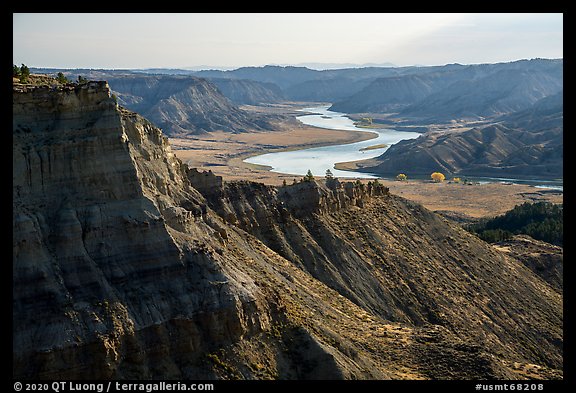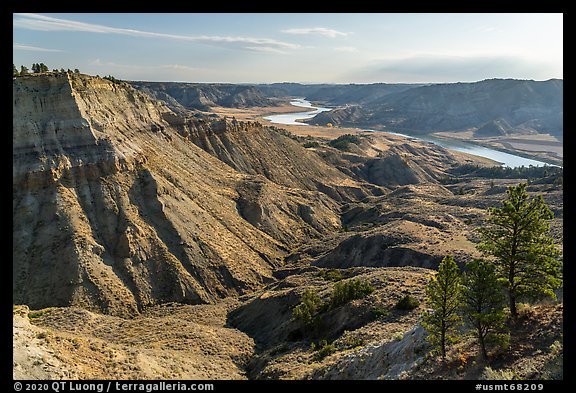
Echoes from the River: The Enduring Heartbeat of the Upper Missouri Valley Nations
Along the winding, powerful currents of the Upper Missouri River, a landscape of profound historical and cultural significance unfolds, home to nations whose roots delve deep into the earth and whose traditions are as resilient as the river itself. While no single "Upper Missouri River Valley Nation" exists in isolation, the region is the ancestral homeland of multiple Indigenous peoples, most prominently the Mandan, Hidatsa, and Arikara (MHA Nation), collectively known as the Three Affiliated Tribes. Their story is one of remarkable adaptation, spiritual depth, devastating loss, and unyielding revitalization, a testament to the enduring human spirit woven into the very fabric of the North American plains.
For millennia, the Upper Missouri River Valley was a vibrant hub of life, culture, and commerce. Long before European contact, these plains tribes, particularly the Mandan and Hidatsa, were not merely nomadic hunters but sophisticated agriculturalists. Their permanent villages, often fortified and featuring distinctive earth lodges, dotted the riverbanks, strategically positioned for trade, defense, and access to fertile bottomlands. Here, they cultivated prodigious amounts of corn, beans, squash, and sunflowers, staples that formed the bedrock of their economy and diet. This agricultural prowess distinguished them from many neighboring nomadic tribes and allowed for a complex social structure, extensive trade networks, and a rich ceremonial life. The Arikara, closely related culturally and linguistically to the Pawnee, migrated north and eventually forged a strong alliance with the Mandan and Hidatsa, solidifying the cultural tapestry of the valley.
The Missouri River itself was more than a geographic feature; it was a lifeway, a highway of exchange, and a sacred entity. It provided sustenance through its fish, fertile soil for crops, and facilitated travel and trade, connecting these nations to distant peoples across the continent. Their societies were intricately organized, often featuring matrilineal clan systems where descent and property were traced through the mother’s line. Women held significant power and responsibility, not only in agriculture and domestic life but also within ceremonial and political spheres. Men, renowned warriors and hunters, also contributed to the community’s well-being, participating in buffalo hunts that provided meat, hides, and bone for tools, and protecting their villages and trade routes. Spirituality was deeply embedded in daily life, revolving around a profound respect for the natural world, the cycle of seasons, and powerful spiritual beings. Ceremonies like the Okipa (Mandan Sun Dance) were central to their spiritual renewal, ensuring the well-being of the community and the continuity of life.
The arrival of Europeans brought profound and often catastrophic changes. Early interactions, documented by explorers like Lewis and Clark in the early 19th century, revealed thriving villages and complex societies. Meriwether Lewis, observing the Mandan in 1804, noted their "large and populous villages" and their "great skill" in agriculture. These initial encounters, however, also introduced devastating diseases. Smallpox epidemics in particular ravaged the Mandan and Hidatsa populations in the late 18th and early 19th centuries, reducing their numbers by as much as 90%. The 1837 smallpox epidemic was particularly brutal, nearly wiping out the Mandan as a distinct people and forcing the remaining survivors to consolidate with the Hidatsa and Arikara for survival. This tragic demographic collapse is a stark reminder of the immense vulnerabilities Indigenous peoples faced, not from warfare, but from invisible pathogens.
Despite these immense losses, the resilience of these nations shone through. They adapted, forming the enduring alliance that would become the Three Affiliated Tribes. Yet, the pressures continued. The 19th century brought increasing encroachment by settlers, the decimation of the buffalo herds, and the imposition of the reservation system. The Fort Berthold Reservation was established in 1870, drastically reducing their ancestral lands. However, the most profound and arguably most traumatic blow came in the mid-20th century with the construction of the Garrison Dam.

Authorized by the Pick-Sloan Missouri Basin Program in 1944, the dam was part of a larger federal flood control and hydropower project. While ostensibly for the public good, its construction resulted in the inundation of 152,360 acres of the MHA Nation’s best bottomlands—fertile agricultural fields, prime hunting grounds, sacred sites, and 90% of their timber resources. Entire communities, including the historic village of Elbowoods, were uprooted. Over 300 homes, schools, churches, and cemeteries were submerged beneath the waters of Lake Sakakawea, a man-made reservoir stretching for nearly 200 miles.
This was not a voluntary relocation but a forced displacement, undertaken with minimal consultation and inadequate compensation. The MHA Nation lost the very heart of their traditional economy and cultural landscape. "It was like a death," recalled Dr. Gerard Baker, a Mandan-Hidatsa elder and former superintendent of national parks, reflecting on the dam’s impact. "We lost our gardens, our burial grounds, our sacred places. We lost our connection to the river in a way we never thought possible." The dam severed their direct ties to the land that had sustained their ancestors for countless generations, creating a wound that continues to reverberate through the community to this day.
In the face of such profound adversity, the MHA Nation has demonstrated extraordinary strength and an unwavering commitment to their traditions. The latter half of the 20th century and the beginning of the 21st have seen a powerful resurgence of self-determination and cultural revitalization. The Three Affiliated Tribes have actively pursued economic development, leveraging their sovereign status to create opportunities for their people. The discovery of vast oil and gas reserves in the Bakken formation, much of which lies beneath their reservation, has brought both unprecedented wealth and new challenges. While oil revenues have funded essential infrastructure, education, and healthcare initiatives, they also bring environmental concerns and the complexities of managing rapid economic change while preserving traditional values.
Crucially, the MHA Nation is fiercely dedicated to preserving and promoting their unique cultural heritage. Language revitalization programs are underway to teach Mandan, Hidatsa, and Arikara to younger generations, as all three are critically endangered languages. Cultural centers and museums, like the Three Affiliated Tribes Museum in New Town, serve as vital hubs for sharing history, showcasing traditional arts, and fostering a sense of identity. Traditional ceremonies, arts like beadwork, quillwork, and pottery, and food sovereignty initiatives are experiencing a renaissance, ensuring that the ancient knowledge and practices are not lost. The annual Mandan Hidatsa Arikara Powwow is a vibrant celebration of culture, song, and dance, bringing together community members and visitors in a powerful display of resilience.
Environmental stewardship remains a core value, with the tribes actively engaging in efforts to protect the Missouri River and the surrounding lands from pollution and exploitation, often standing at the forefront of Indigenous-led environmental movements. Their traditional ecological knowledge, honed over millennia, offers invaluable insights into sustainable land and water management.
The story of the Upper Missouri River Valley Nations, particularly the Mandan, Hidatsa, and Arikara, is a compelling narrative of survival, adaptation, and an enduring spiritual connection to their homeland. It is a story of a people who, despite facing existential threats—from disease and displacement to the inundation of their ancestral lands—have refused to be erased. Their traditions are not relics of the past but living, breathing forces that continue to shape their identity and guide their future. The echoes of their ancestors, the wisdom of their elders, and the vibrant spirit of their youth continue to resonate along the powerful Missouri, a testament to the fact that while the river may change its course, the heart of a nation beats on.
